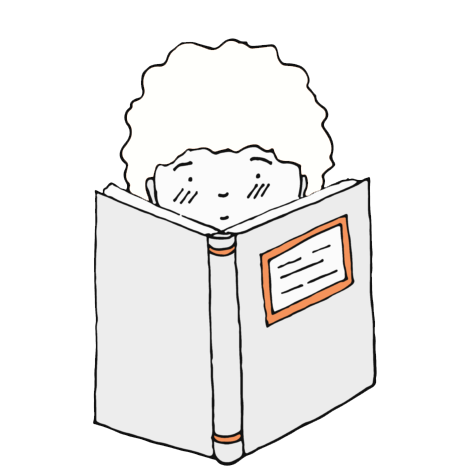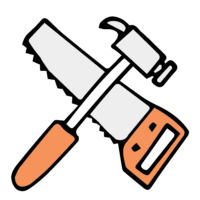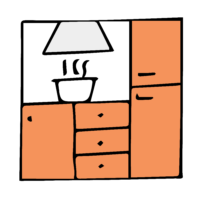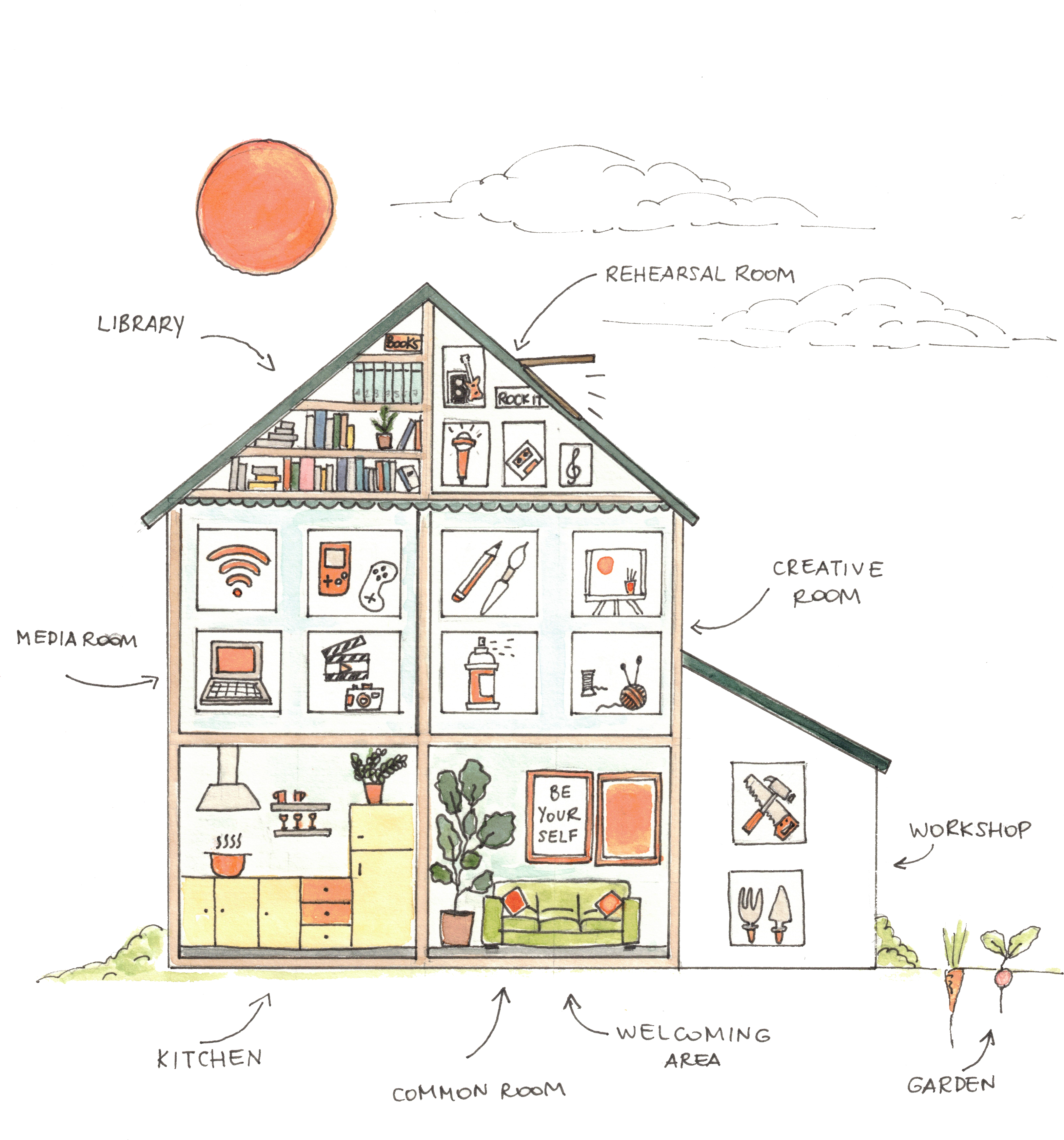OPEN YOUTH WORK FOR OPEN SOCIETY.
Give a chance to Informal Youth Centres.
Dream Youth Centre
DREAM YOUTH CENTRE. A SPACE BY AND FOR YOUNG PEOPLE
This chapter explores how young people envision their ideal youth centre—what it looks like, how it functions, who animates it, and what atmosphere it creates. It is a collective imagining of a space designed not just for youth, but with youth at its heart..
To better understand these visions, we carried out a structured interview process with young people actively engaged in youth centres. The goal was to gather their thoughts on informal and open youth work, as well as their expectations for the spaces and professionals involved. What do they hope to find when they walk into a youth centre? What makes them feel welcome, seen, and inspired?
From this research, a set of essential and recurring features began to emerge. Despite the variety of local realities, youth work approaches, and physical infrastructures, five key characteristics stood out—attributes that define what we might call a “dream youth centre.” These include sustainability, adaptability, innovation, accessibility, and multifunctionality. While not exhaustive, they offer a shared foundation from which to reflect on what young people truly value in their spaces of growth, expression, and connection.

How it should be

Welcoming area
A space to welcome for all those who want to enter the youth centre, to ask or find information, to get to know the space. It is the first contact, where the Host will be most present.

Common room
A space where the youngsters can gather together to connect with each other, have fun and relax. The space should also contain board and card games and it would allow young people to socialize.

Rehearsal room
A fully equipped room where youngsters can experiment with different instruments through the universal language of music, record their own music, learn how to play an instrument or discover a new passion.

Stage / Theatre
A space where young people can perform live music and that can host a big group of people. In this room it is possible to host music-related events, concerts, cinema events, workshops, discussions, seminars and performative events.

Creative room
A room where youngsters can have free access to different kinds of materials to let them express their creative ideas as they want. They will have free access to different tools and materials to learn different techniques.

Library / Media Room
A space where youngsters can have free access to books, films and music. It is an adaptable space with chairs, table and sofa that can be used for studying, research and as a cinema.

Workshop Room
A space where young people can develop their practical building/ makers repairing skills. In this space they will have free supervised access to all the gardening tools, drilling machines, wood and other materials, screws, nails, etc.

Cafè / Kitchen
A meeting space where people can get together and can cook, where youngsters can learn how to work in a bar, a space that will be used during the events but also on a daily basis. The kitchen also hosts cooking workshops.

Sport space
A multifunctional space where youngsters can play different kinds of sports. A quiet space can also be provided, with wooden floor and mirrors, where young people can do yoga, meditation, dance, exercises and physical activities.

Outdoor area
This area contains a vegetables garden, an outdoor space for activities, a climbing wall, workout machines, a food area with a pizza oven to make pizza and a grill area, a shelter and some bike racks. It should be big enough to host all youth centre youngsters.

Open Youth Work Essentials

What Defines a Dream Youth Centre?
Through the voices of young people and youth workers, five core characteristics emerged — recurring elements that, despite differences in context,
help define an ideal youth centre:
-
Sustainable: Guided by environmental responsibility — from energy efficiency and renewable sources to everyday practices like reducing plastic, promoting recycling, and choosing local, eco-friendly materials.
-
Adaptable: Designed to evolve with its users. Flexible layouts, movable furniture, and inclusive programming allow the space to respond to changing needs and encourage creativity, collaboration, and a sense of ownership.
-
Innovative: A place for curiosity and experimentation. Through non-formal learning, youth are empowered to explore ideas, launch projects, and learn by doing — beyond conventional limits.
-
Accessible: Open and welcoming to everyone, regardless of background, ability, or income. It’s a space where all young people feel safe, included, and free to participate or take the lead.
-
Multifunctional: More than just a venue — it’s a vibrant hub supporting diverse groups and activities. Open layouts, shared calendars, and strong communication help build community and ensure everyone stays connected and engaged.
Young People’s Voices
This section shares key insights from questionnaires developed and conducted by each organisation with their local youth. Using a structured interview format — beyond simple yes/no questions — participants were encouraged to reflect and explain their views. Each youth centre selected 10 regular attendees, who were interviewed individually by youth workers or trusted adults in a safe, open, and pressure-free environment. Interviews were conducted in local languages and later translated into English.
Open Activities in the Youth Centre.
The youth centre imagined by young people is a vibrant, flexible space full of opportunities. Activities mentioned include graffiti, jam sessions, video and photography workshops, gardening, theatre, and more. A key need that emerges is autonomy—young people want to manage their time and choose their involvement freely.
Learn more
The role of staff is important but should remain responsive and open rather than directive. Leadership must adapt to support—not control—youth initiatives. Activities can take many forms:
-
Proposed by young people for young people
-
Proposed by experts, enabling youth to develop new skills
-
Co-created by youth workers and participants
-
Designed by youth workers, yet still involving young people meaningfully
Ultimately, the youth centre is seen as a space of possibilities, open to ideas and change.
What do you see when you enter?
Young people imagine a centre that is visually engaging, starting from its exterior: covered in graffiti, stickers, posters, and artistic elements. Inside, the space is open, adaptable, and unfinished—ready to be shaped by its users.
Learn more
They describe multiple levels and versatile rooms that can serve different purposes. Key areas include:
-
A reception/welcome zone
-
Chill-out rooms with large sofas, bean bags, and pillows
-
A coffee/tea area
-
Spaces for board games, books, exhibitions, music, and video games
-
Hand-crafted decorations and lots of plants
-
An infoboard to stay up to date with activities
More than design, what matters is the atmosphere: young people want a place that feels relaxed and welcoming, full of friendly, smiling people who are calm, unhurried, and positive.
What’s it like talking to the Staff?
Young people want staff who are approachable, understanding, and encouraging. Communication should be clear and open, helping them to feel connected to the space. Some want youth workers who share their passions, who guide them to explore new interests, while some just need basic orientation before navigating independently.
Learn more
Concerning the communication skills that young people would like to find in the staff of a Youth Centre, the desire that emerges is to feel welcomed, not forced, guided to discover the spaces and opportunities of a centre (“I feel welcomed but not forced”), in terms of activities, and to be introduced in existing youth groups.
A conversation with a member of the staff should be: relaxed, friendly, nice, calm, welcoming, open, controlled, but also energetic, easy going, with a positive mood and respectful.
